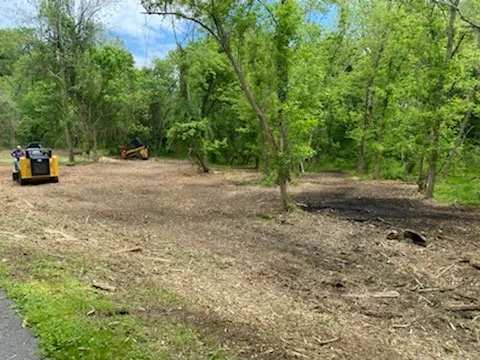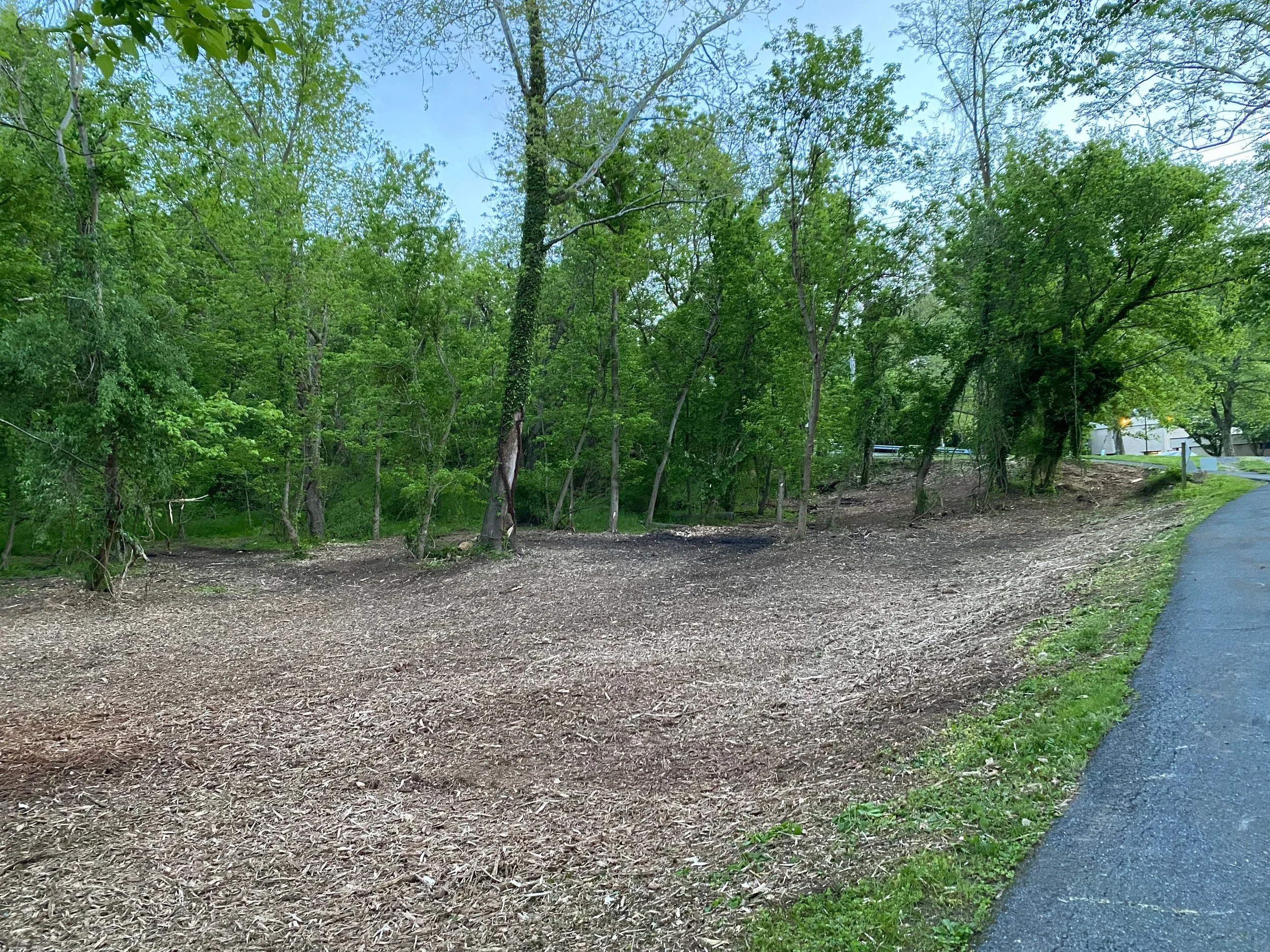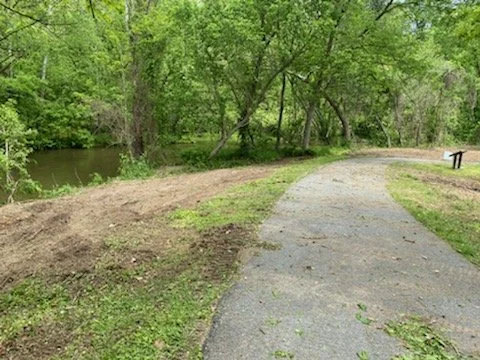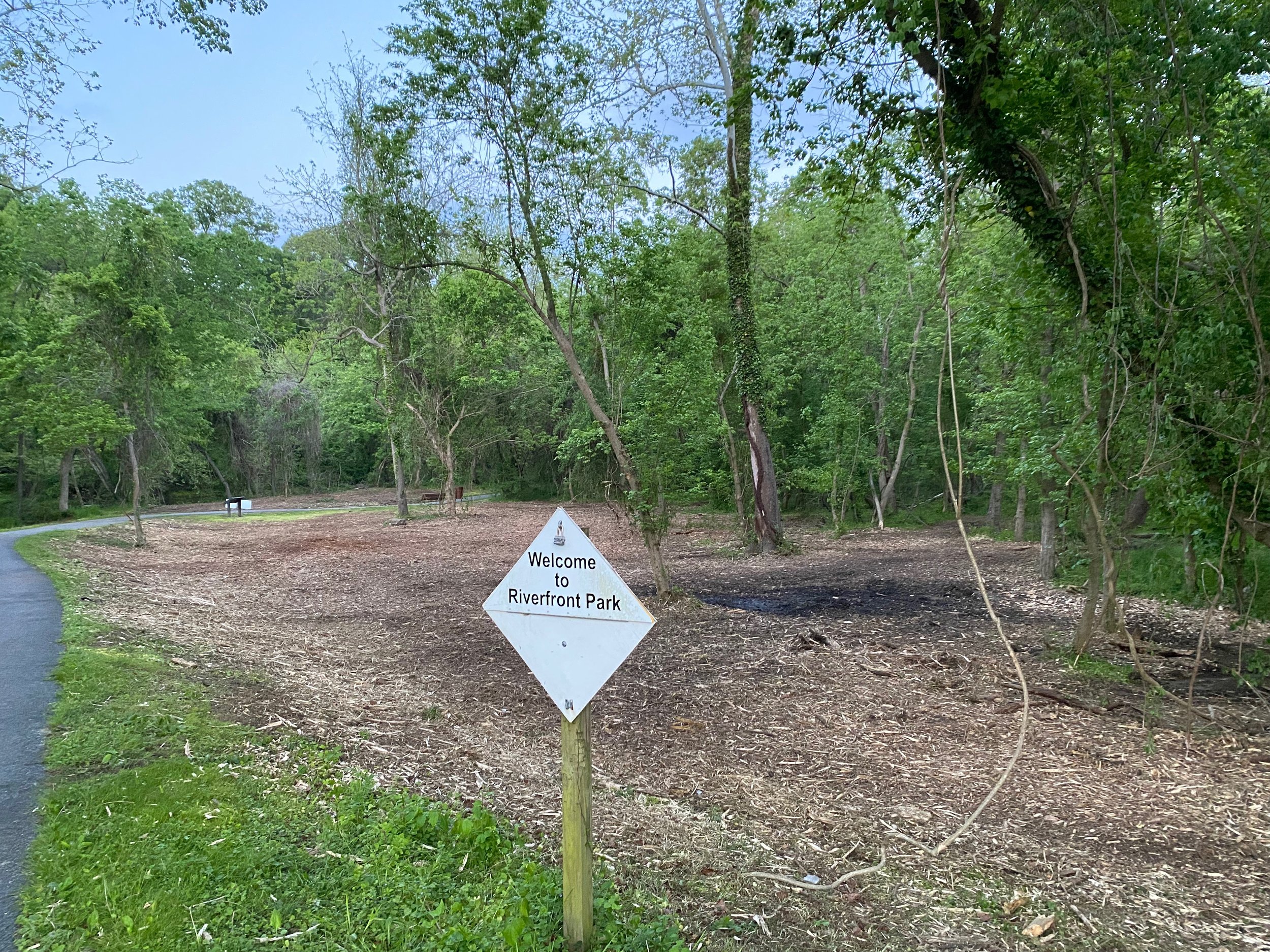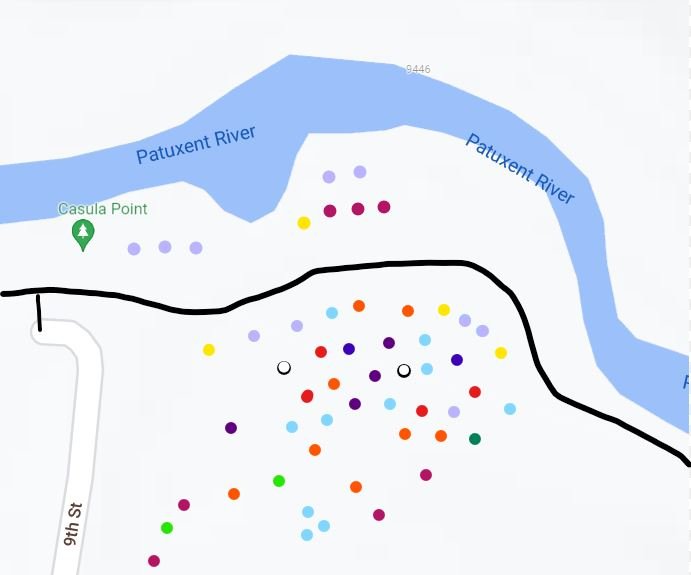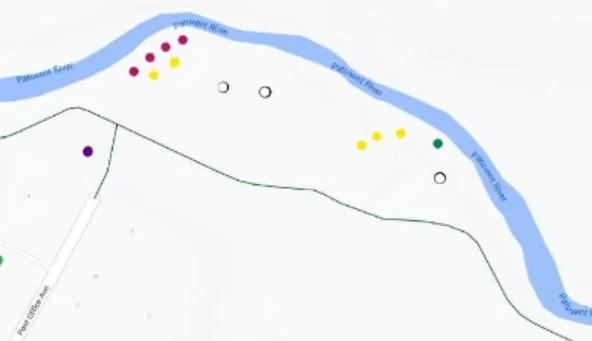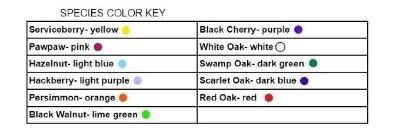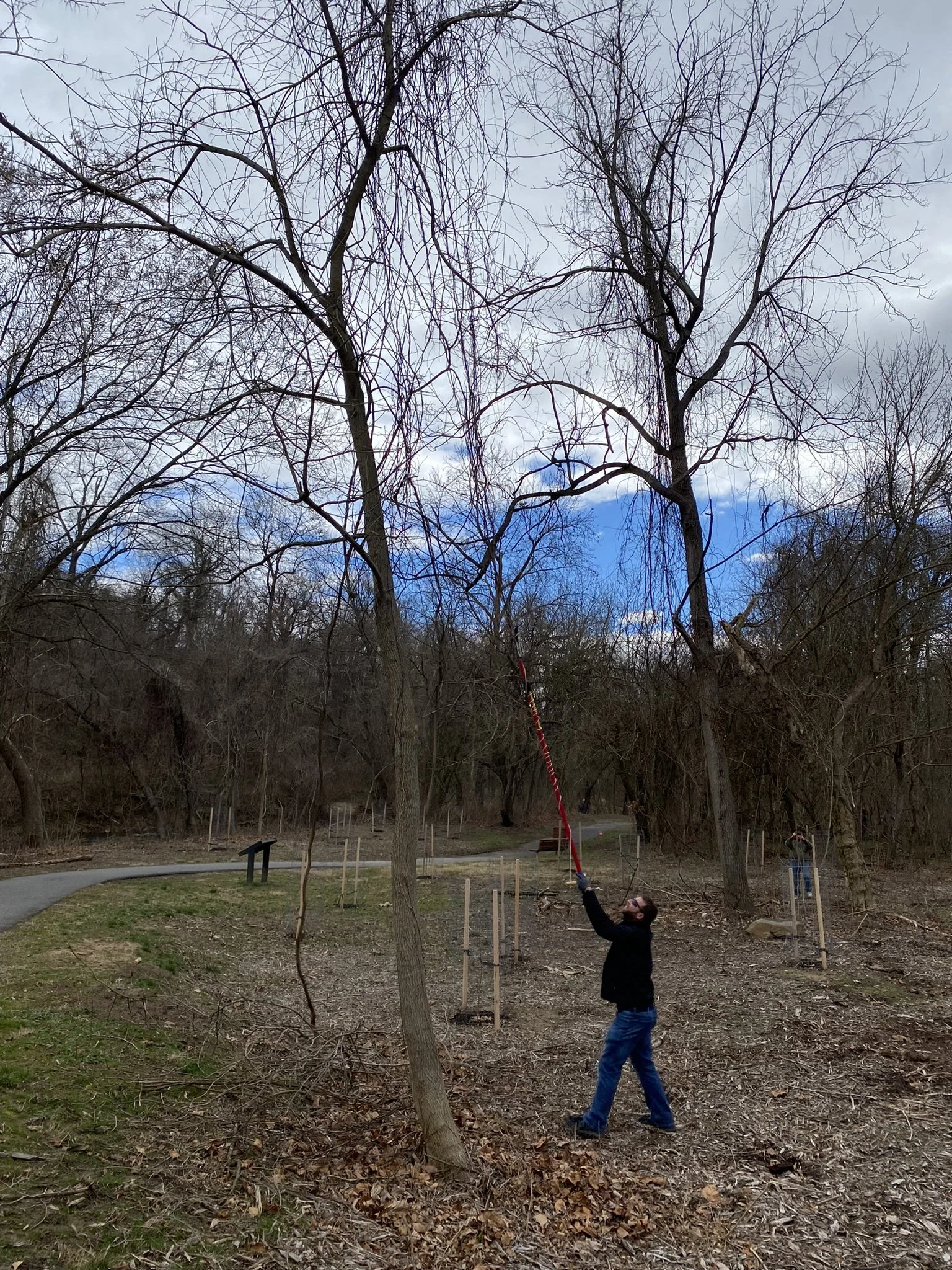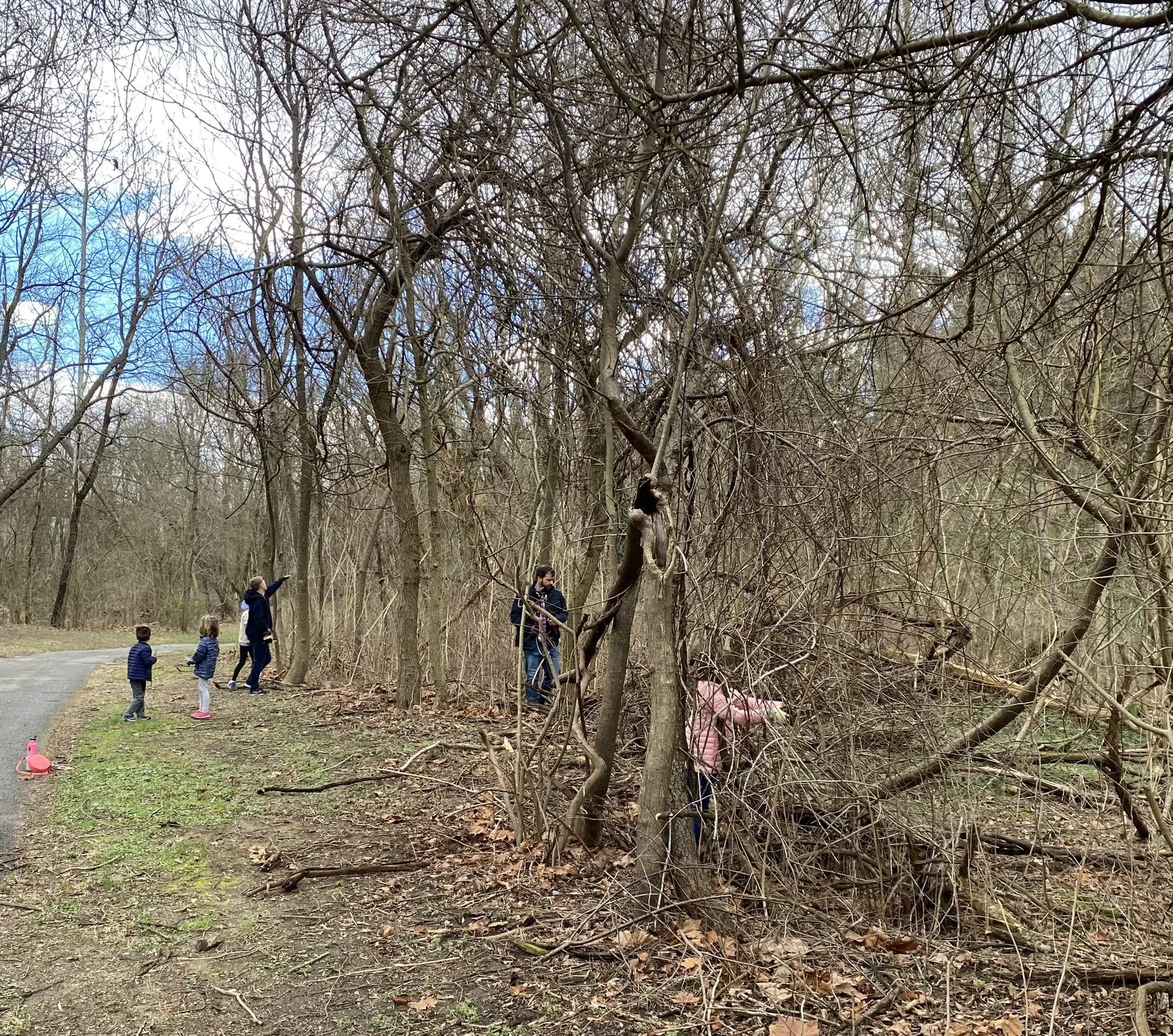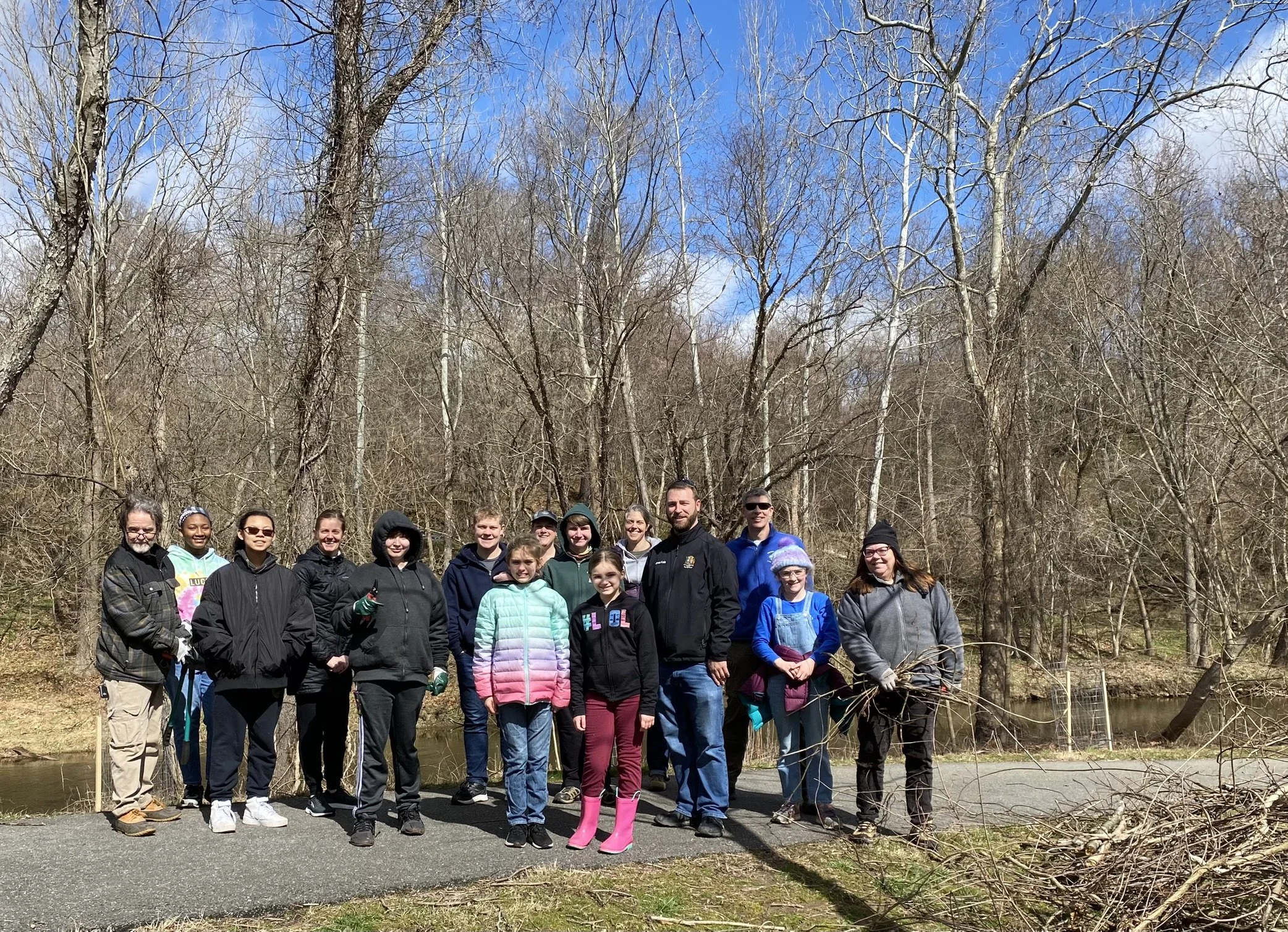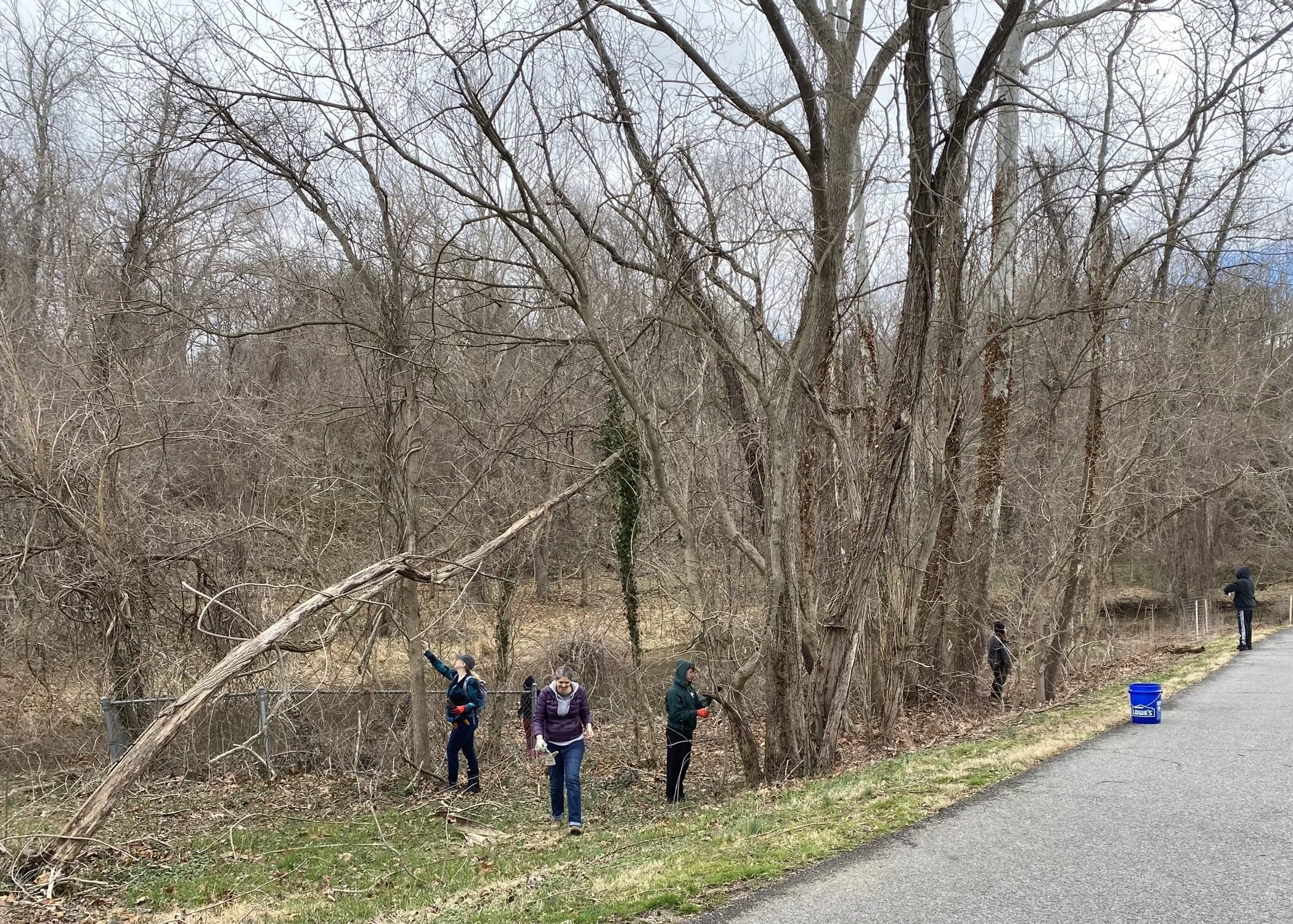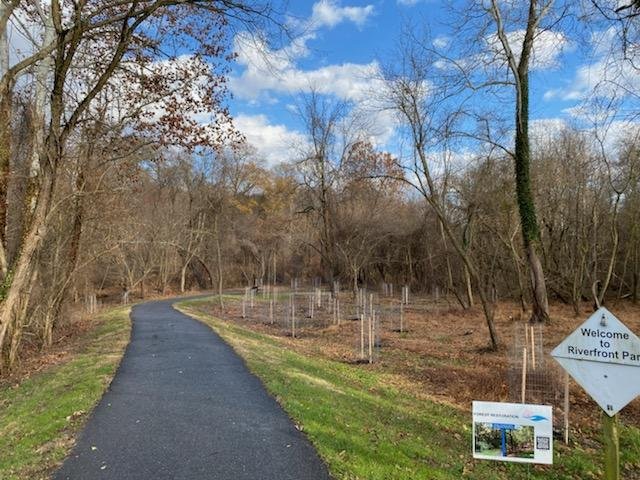
Riverfront Restoration
Laurel’s beautiful Riverfront Park is important to the health of the Patuxent River that runs alongside it. Unfortunately, invasive plant species have spread here. Some include Multiflora Rose, Tree of Heaven, Kudzu, Oriental Bittersweet, and Japanese Knotweed. These invasive species out-compete the native plants, leading to severe habitat degradation, loss of foraging opportunities for wildlife, and erosion. L4P is working hard to restore the river front. Here’s how:
Forestry Mulching
A three-quarter acre area located next to 9th Street, between the Laurel History Museum and the Riverfront Park, was targeted for forestry mulching.
We then seeded the mulched bank with naturalized red fescue, which has 12 inch roots. This will help control erosion. Biodegradable erosion control blankets were also spread on the areas of exposed soil to prevent runoff.
What is forestry mulching? A forestry mulching machine uses a series of powerful teeth on a spinning metal drum to shred vegetation into mulch. This method is used to clear heavily forested areas of unwanted vegetation, such as invasives.
Why use forestry mulching? Forestry mulching clears space for many purposes. In our case, we will be using it to prepare the area for forest restoration. We will clear unwanted plant material, while leaving desirable plants. Nothing is wasted; all mulch will remain onsite to protect the soil, reduce erosion, and decompose.
Will all the trees be removed? No. Native vegetation in good condition will be flagged and preserved before any work will commence.
Native Tree Planting
L4P, in partnership with Howard EcoWorks, planted 68 trees in Laurel’s Riverfront Park as part of our reforestation efforts. Eleven species of native trees were planted behind the Laurel Historical Society Museum and at the end of Post Office Avenue. All trees were prepped with watering rings, mulch, stakes, and protective animal wire. Stop by the park to check them out!
Invasive Plant Mitigation
Volunteers participate in work days multiple times a year to help cut back and remove invasive plants and vines. With restoration specialist Sandy Spencer from USFW-Patuxent Refuge, we carefully applied selective herbicide to treat invasive species that cannot be eliminated by mechanical methods alone.
Our work at the Riverfront Park is generously supported by a grant to Laurel for the Patuxent by the Pepco Sustainable Communities Program, administered by the Rock Creek Conservancy. We are grateful to the many volunteers and organizations that have helped with invasive mitigation over the years, especially the US Fish and Wildlife Patuxent Research Refuge.
Project Collaborators: The City of Laurel, Patuxent Research Refuge, Laurel Historical Museum, EcoWorks of Howard County

